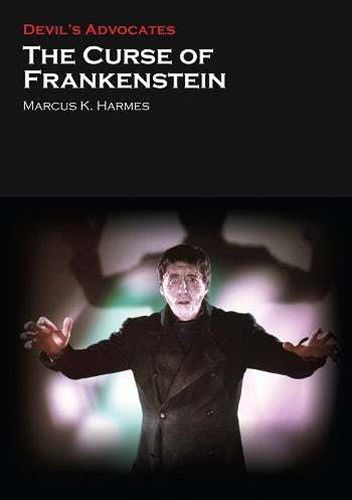Readings Newsletter
Become a Readings Member to make your shopping experience even easier.
Sign in or sign up for free!
You’re not far away from qualifying for FREE standard shipping within Australia
You’ve qualified for FREE standard shipping within Australia
The cart is loading…






Critics abhorred it, audiences loved it, and Hammer executives where thrilled with the box office returns: The Curse of Frankenstein was big business. The 1957 film is the first to bring together in a horror movie the ‘unholy two’, Christopher Lee and Peter Cushing, together with the Hammer company, and director Terence Fisher, combinations now legendary among horror fans. In his Devil’s Advocate, Marcus Harmes goes back to where the Hammer horror production started, looking at the film from a variety of perspectives: as a loose literaryadaptation of Mary Shelley’s novel; as a film that had, for legal reasons, to avoid adapting from James Whale’s 1931 film for Universal Pictures; and as one which found immediate sources of inspiration in the Gainsborough bodice rippers of the 1940s and the poverty row horrors of the 1950s. Later Hammer horrors may have consolidated the reputation of the company and the stars, but these works had their starting point in the creative and commercial choices made by the team behind The Curse of Frankenstein. In the film sparks fly, new life is created and horrors unleashed but the film itself was a jolt to 1950s cinema going that has never been entirely surpassed.
$9.00 standard shipping within Australia
FREE standard shipping within Australia for orders over $100.00
Express & International shipping calculated at checkout
Critics abhorred it, audiences loved it, and Hammer executives where thrilled with the box office returns: The Curse of Frankenstein was big business. The 1957 film is the first to bring together in a horror movie the ‘unholy two’, Christopher Lee and Peter Cushing, together with the Hammer company, and director Terence Fisher, combinations now legendary among horror fans. In his Devil’s Advocate, Marcus Harmes goes back to where the Hammer horror production started, looking at the film from a variety of perspectives: as a loose literaryadaptation of Mary Shelley’s novel; as a film that had, for legal reasons, to avoid adapting from James Whale’s 1931 film for Universal Pictures; and as one which found immediate sources of inspiration in the Gainsborough bodice rippers of the 1940s and the poverty row horrors of the 1950s. Later Hammer horrors may have consolidated the reputation of the company and the stars, but these works had their starting point in the creative and commercial choices made by the team behind The Curse of Frankenstein. In the film sparks fly, new life is created and horrors unleashed but the film itself was a jolt to 1950s cinema going that has never been entirely surpassed.